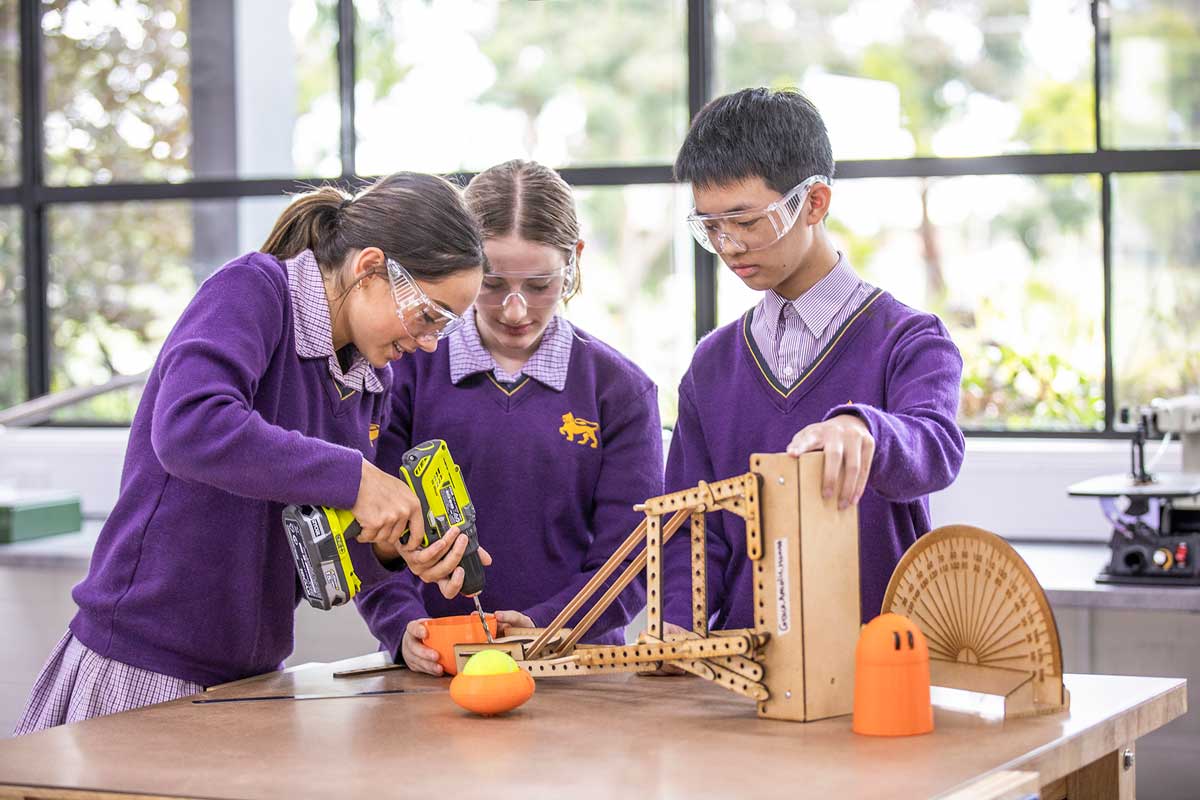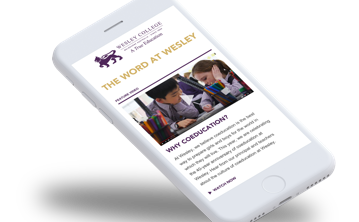
New student-centred developments at the heart of Wesley Glen Waverley campus enable students to expand their STEM and design technology skills as Daniel Galvin, the Head of Design and Technology, explains.
In a world increasingly dependent on science, technology, engineering and mathematics (STEM) knowledge and skills, enabling students to develop their digital skills and capabilities – as consumers and producers – is more important than ever. The new STEM and design technology hub at the Glen Waverley Campus, called the Tech Centre, is a learning space that is enabling students to do exactly that.
With two main classrooms and a product design and versatile makerspace, the Tech Centre enables students to develop and apply their STEM and design technology knowledge and skills, from developing a concept and rough prototype through to creating a final product.
The Tech Centre is equipped with a laser-cutter, systems engineering lab, industry-standard CNC (Computer Numerical Control) router and makerspace, all of which enable students to give shape to their design ideas. Without great program design and highly capable teachers, though, this is only hardware. Many of the teachers in our Design and Technology faculty bring unique design specialties to the role. Their real-world industry experience and teaching expertise combine to create a truly design-oriented STEM learning environment, and our students pick up on that.
The Tech Centre is part of our ongoing focus on STEM programs that develop real-world experiences and provide students with opportunities for authentic, inquiry-based learning. This includes the development of industry relationships, which is quite common in tertiary learning environments but quite rare in schools.
Many STEM and design processes in the real world are actually about learning by developing and testing ideas and prototypes. By applying the design process to new briefs and real-world problems, students learn to approach problems methodically. They also learn that failure is not so much a problem as an indicator of the path to a solution, and that’s a really useful understanding they can then bring to their learning in other areas.
The design process is not only about creativity but also critical thinking. Critical thinking is about really nutting out the question you want to answer, or the problem you want to solve. If you don’t ask the right question, it’s awfully hard to get the right answer.
Our students’ creativity and critical thinking skills, and the problems and solutions they identified, were particularly well demonstrated in our Year 8 app-development program in 2019.
A kick-off with Selim Ahmed, the founder and managing director of local digital agency, Bourne Digital, gave students plenty of insights into the process of professional app-development before they then conceptualised their own apps, based on a brief that required them to address the United Nations Sustainable Development Goals.
In a simulation of a real venture capital pitch similar to the entrepreneurial television program, Shark Tank, the students behind the 12 strongest apps – as selected by both peers and teachers –then pitched to a panel of industry professionals, including Ahmed and Bourne Digital UX (user experience) designer Ben Kemal (OW2002).
In the design process, the pitch is not an add-on, it’s a crucial part of developing a viable product or service, and for our students it’s a powerful learning experience. The feedback from the panelists was that the winning student’s pitch showed a level of professionalism they would expect from their own team.
For the pitch, students utilised the new collaborative learning hub and mini-theatrette in the newly-opened facility, The Drennen Centre. Located beside the Tech Centre, The Drennen Centre has become a campus hub, providing not only additional high-tech, flexible learning spaces for students, but also a whole-campus library, a Year 9 precinct and language classrooms.
Dedicated facilities across all three campuses are providing places for students to look at design-based solutions to real problems and equipping them with unique skills.
Albert Einstein once explained, ‘When I have one week to solve a seemingly impossible problem, I spend six days defining the problem. Then the solution becomes obvious.’ A design-oriented STEM learning environment is enabling our students to address real problems and solutions, and maybe even to solve seemingly impossible problems.
Daniel Galvin is Head of Design and Technology at the Glen Waverley Campus
Related: read more on the Year 8 app-development program in ‘Entrepreneurs in the making'
